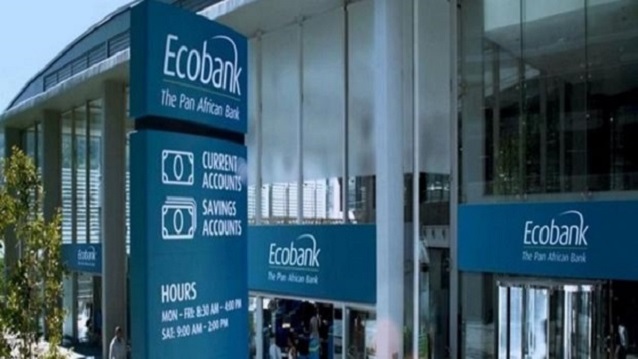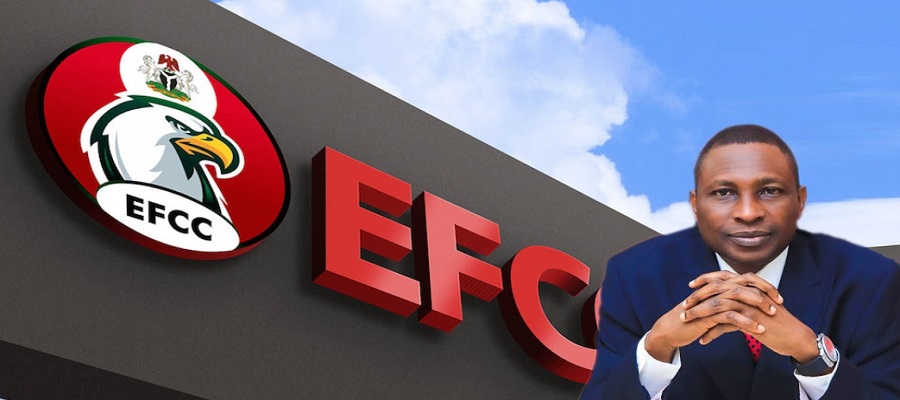E-Financial
The Collapse of FTX

By Oluseyi Akindeinde
FTX recently valued at $32 billion dollars, has filed for Chapter 11 bankruptcy protection in the US. The filing in Delaware federal court on Friday 11th November, 2022 included the main FTX international exchange, FTX US a US crypto marketplace, Sam Bankman-Fried’s proprietary trading group Alameda Research and about 130 affiliated companies.

In this piece I try to dissect what went wrong at FTX, and discuss possible ramifications for the crypto industry.
The Players
- Sam Bankman-Fried aka SBF (The self proclaimed Crypto White Knight and member of the inner caucus. Darling of Washington DC).
- Caroline Ellison aka CE (His Girlfriend).
- Changpeng Zhao aka CZ (The Outcast Dark Crypto Lord).
The Entities
- Alameda Research (AR). The Trading company founded and OWNED by SBF but managed by CE. Revenue earned through market making (ie providing liquidity to crypto exchanges) as well as trading/speculating on cryptocurrency futures using a high degree of leverage.
– FTX (FTX.com). Cryptocurrency
Futures Exchange (brokerage and derivatives platform) OWNED and CONTROLLED by SBF. Revenue earned through customer transaction fees who trade and speculate on cryptocurrency futures and derivatives(day traders). The trading platform was called FTXPro.
– Binance. A rival crypto Exchange OWNED & CONTROLLED by CZ. The Biggest cryptocurrency spot exchange in the world by volume.
Quick Summary
- AR and FTX were meant to be separate entities even though they were founded by the same person SBF.
– FTX had a market-cap (networth) of $32 billion having raised funding from well known
VCs in Silicon Valley including Sequoia Capital.
- AR allegedly owed FTX $8 billion after taking loans apparently funded by deposits of FTX customers.
- AR used these borrowed funds to trade cryptocurrencies with leverage and also to bail out struggling crypto companies (Voyager and BlockFI) who had liquidity issues.
– FTX declared bankruptcy with loads of customer funds gone with it.
How Money Disappeared – Summary
– SBF founded AR and FTX.
– FTX also issued FTT tokens which they gave to early investors that included AR.
– As an exchange, customers deposited their funds on FTX to trade with.
– SBF basically gave these customer deposits to AR as loans to be used for their trading activities and in return accepted FTT tokens (originally issued by FTX) as collateral for the loan.
– A report then came out that pointed out that AR’s balance sheet was basically made up largely of FTT tokens issued by FTX.
– CZ (who once bought a stake in FTX but later divested because he had a bone to pick with SBF) upon getting wind of this development announced he would de-risk his entire $500M of FTT position.
- On the back of this, other customers also started to dump their FTT tokens and immediately started withdrawing their funds on FTX. It led to a bank run.
- AR then started selling assets presumably on other exchanges to send back to FTX to shore up capital in order to meet the customer shortfall.
- When SBF realized the liquidity squeeze, he then reached out to CZ for a bail out of FTX wherein CZ accepted the offer of bail out subject to corporate due diligence.
- CZ later pulled out of the deal because his due diligence on FTX had come up short.
- FTT price tanked as FTX had no liquidity in reserve to meet customer withdrawal obligations and subsequently paused withdrawals.
– From being illiquid, FTX became insolvent since the value of the collateral held (FTT) had fallen below the value of their liabilities.
- SBF basically thought he could print money (FTT) out of thin-air using FTX as the mechanism and use it as collateral against real assets.
- FTX, AR and SBF filed for bankruptcy protection post- haste.
How Money Disappeared – Details
Background
- SBF, an MIT physics graduate and a former Wall Street futures trader made a lot of money trading crypto arbitrage. He founded AR but gave CE the reins of power when he founded FTX a crypto futures and derivates trading company.
- FTX as part of its operations issued a token called FTT. It is like airline miles or reward points as you don’t get any ownership stake in FTX itself.
- FTT token allowed the holder to obtain discounts on trading fees when they trade on FTXPro. It could also be pledged as collateral for futures trading on FTXPro.
- FTX used a portion of profits (trading fees) generated to buy back and burn a portion of FTT in circulation.
- So indirectly FTT token was tied to the profitability of FTX – that is the more profitable FTX was, the more FTT tokens FTX would buy back leading to an increase in the price of the FTT tokens (the reverse was also the case if FTX wasn’t profitable).
– Burning FTT would also lead to reducing its supply which further increases its price. This also made FTT behave somewhat like a company stock. But it wasn’t legally a stock.
– There were over 400,000 holders of FTT at the last count.
– Word got out about AR’s balance sheet which had $14.6 billion but it’s biggest asset was
$3.7bn worth of “unlocked FTT” and its other biggest asset was
$2.2bn worth of FTT that were pledged as collateral. Basically nearly half of AR’s balance sheet was made up of FTT tokens – an asset created by FTX.
- AR’s balance sheet liability also carried $7.4bn worth of liabilities (loans).
- From purely a risk management point of view, this was rather bad because AR was using it’s own equity as collateral for borrowed money. If the company became unprofitable, this would be bad in itself but if the collateral (FTT tokens) backing those loans were to fall in value, this would become a disaster for AR.
Relationship Between FTX and AR
- SBF founded both companies. FTX being the exchange. AR was the trading company using FTX to conduct its trading activities.
- FTX and AR claimed they were completely separate entities. Speculation however started to spread on social media that the two companies were one and the same and customer funds on FTX were finding their way to AR behind the scenes.
– It was later gathered that FTT token’s price was being propped up by AR. Not only that, AR was further using FTT it got issued by FTX as collateral to the same FTX to fund its own operations.
– It was bad enough that AR carried a lot of illiquid assets on their books (FTT), it became even worse when FTX started giving a huge portion of their customer funds to AR as loans which were collateralised and secured by the very same FTT tokens issued by FTX.
– Remember that FTX issued FTT tokens in the first place. So, they were getting back what they issued as collateral. Like plugging an extension plug into itself. Simply means if the price of FTT went down, FTX would be seriously impacted.
Crisis Brewing
- FTX’s primarily business was being a broker dealer. They were listing and selling
perpetual crypto futures and allowing AR and other traders/ speculators to trade crypto derivatives often with huge leverage.
- As a result, they needed a reserve of money to lend to AR and speculators.
- And because FTX and AR were one and the same, customer funds deposited on FTX were diverted to AR for leveraged trading operations.
- Once suspicion started to filter
through that FTX didn’t have enough crypto on hand to honour all customer withdrawals, customers started demanding for their funds and FTX started having liquidity issues as there wasn’t enough reserve on hand to meet up with customer’s withdrawals.
- AR in turn started withdrawing funds (stable coins and crypto)
they had on other exchanges to send to FTX. This served to further confirm that FTX was really facing a liquidity crisis.
Denials
- SBF denied the liquidity crisis and basically said everything was fine and customer funds were intact. He even claimed it was all the work of competitors trying to spook them.
- At the same time CE (who ran AR) took to twitter to say that AR had $10bn in liquidity not reported on the balance sheet.
Enter CZ
- CZ who was a former investor in FTX had over $500M worth of FTT. It was paid in part as
settlement when CZ divested from FTX in 2021.
- Actually SBF bought back CZ’s stake in FTX and paid him $2.1bn in BUSD and FTT tokens.
- When CZ got wind of the report of AR’s balance sheet and its asset makeup, he made a public declaration to offload his entire $500M worth of FTT in what he called a “de-risking” process.
- This piece of public declaration naturally spooked the markets as speculators who held FTT tokens started de-risking (selling) as well.
The Death Spiral
- With speculators selling, FTT price began to plummet.
- It was made worse when CE incredibly made a public offer to CZ that AR were willing to buy Binance’s entire FTT stake at $22 each over-the-counter.
- This further fuelled the fire that AR and FTX were using FTT as collateral for crypto loans and feared getting liquidated.
- This caused hundreds of millions of dollars in FTT liquidations on FTX and because
of low liquidity it further crashed the price. AR and FTX also started selling off the other crypto assets they held to prevent FTX from collapsing.
This caused other cryptocurrency prices to tank. A ripple effect.
- Traders also started rushing to pull their funds off FTX exchange for fear that the exchange would collapse. This essentially led to a bank run.
The Aborted Rescue Mission
- People just couldn’t believe that FTX, a company that had raised a combined $1.8bn in VC money could be facing insolvency.
- The unthinkable then happened – SBF publicly reached out to CZ and asked to be bailed out.
- CZ accepted by signing a non- binding letter of intent (LoI) to buy FTX pending due diligence.
This served to further confirm that FTX was indeed neck deep in trouble.
- The following day, however, CZ through Binance made it known that they wouldn’t be taking up the offer of buying FTX as the issues were simply too many.
FTX had failed their process of corporate due diligence.
Binance also cited risks related to pending regulatory investigations on FTX and reports of internal FTX funds mismanagement.
- FTX then paused withdrawals of customer funds. There was already an $8bn shortfall.
- SBF attempted a last ditch effort at raising funds but no offer of a bail-out was forthcoming.
Bankruptcy Filing
- FTX and AR are now insolvent and SBF has filed for Chapter 11 bankruptcy protection.
- They imploded in a wave of scuttlebutt and were brought down in truly exceptional circumstances.
- The fallout of this is still unravelling and will most likely take a few months to sort out. Until then there will still be blood on the crypto streets so tread with caution. Brace yourselves for more bloodbath.
- A lot of people lost loads of money on FTX. Here’s a Never leave your funds on an Exchange. Get a non-custodial wallet and move your funds there. Exchanges are centralized entities.
Wrap up
Naturally people will be more skeptical of crypto but this, in fact isn’t crypto problem.
This was caused by a few self- absorbed, irresponsible and incompetent individuals like SBF and CE running centralised entities engaging in blackbox-like business practices, mis-using customer funds to run opaque financial institutions under a cloak of invincibility with no oversight regulation.
These guys basically ran a huge fraudulent operation which could have gone undetected for a long time.
The system needs sanitization. Some regulation needs to be enforced to bring a semblance of order to the industry.
A lot of Nigerians lost money in this debacle and I truly sympathize with you if you did. These are truly extraordinary times.
At the end of the day nothing is wrong with crypto. It’s just a medium and a tool in the hands of nefarious individuals. Going forward though, always remember: Not your keys. Not your coins.
I round off with these words from CZ

Oluseyi Akindeinde is the Chief Technology Officer, Digital Encode.
E-Financial
UBA Expands to More African Cities, Stamps Footprint in Saudi Arabia

United Bank for Africa (UBA) has announced strategic expansion into more African countries even as it plans to open a new office in Saudi Arabia, marking a significant milestone in its mission to connect Africa with key global markets.

Oliver Alawuba, GMD/CEO, UBA group,
This emerged during the Group’s Half Year Business Review held at its global headquarters in Lagos, where Oliver Alawuba, group managing director/CEO, UBA group, met with senior executives overseeing UBA’s 24-country footprint.
The meeting reaffirmed the bank’s pan-African strategy while outlining bold new steps into global markets.
Alawuba highlighted UBA’s continued growth outside Nigeria, with more than 51.7% of Group revenues now generated from its ex-Nigerian operations.
He described the Saudi expansion as a move that positions UBA to support cross-border trade, attract investment flows, and better serve the African diaspora.
“UBA’s vision is clear—we are building a truly global institution anchored in Africa, but serving customers across continents. Our entry into Saudi Arabia signals confidence in new opportunities and commitment to supporting economic connectivity between Africa and the Middle East,” he said.
The Saudi expansion adds to UBA’s international presence, which currently includes the United Kingdom, United States, France, and the United Arab Emirates. Alawuba also disclosed that the bank is upgrading its operating licence in France to further strengthen its European operations.
“In Europe, UBA has operations in the United Kingdom and is upgrading its licence in France, expanding its capacity to serve cross-border trade, investment flows, and the African diaspora, complementing our over 40-year presence in New York,” Alawuba noted.
Since launching its pan-African journey with an entry into Ghana in 2004, UBA has expanded rapidly across 20 African countries, establishing itself as a leading driver of financial inclusion, innovation, and regional integration.
E-Financial
Ecobank Plans to Raise $250m Capital Through Private Placement

Ecobank Transnational Incorporated announced its plan to raise up to $250m in Additional Tier 1 capital through a private placement of contingent convertible notes.

In a statement filed on the Nigerian Exchange Limited recently, the capital raise was approved by shareholders at the company’s Extraordinary General Meeting held in Lomé, Togo. The private placement offer was launched on July 9 and will run for ten days.
“Following the approval of the shareholders at its Extraordinary General Meeting held on May 28, 2025, in Lomé, Togo, to raise up to $250m in additional Tier 1 capital qualifying instruments via a private placement of contingent convertible notes, Ecobank Transnational Incorporated announces the launch of the AT1 effective July 9, 2025, for ten days. Renaissance Capital Africa has been appointed as the transaction adviser to ETI.”
The move is an initiative aimed at strengthening Ecobank’s capital adequacy, enhancing financial resilience, and supporting its long-term growth ambitions across its diversified pan-African banking platform.
Additionally, Madibinet Cisse, Ecobank’s Company Secretary, said, “This proposed capital raise represents a critical step in our efforts to fortify the bank’s financial foundation and support sustainable growth across Africa.”
It would be recalled that Ecobank Transnational Incorporated, the parent company of the Ecobank Group, has raised an additional $125m through a Eurobond tap, bringing the total size of its 2029 notes to $525m.
E-Financial
EFCC Recovers Funds Lost to CBEX Fraud

Ola Olukoyede, chairman, Economic and Financial Crimes Commission (EFCC), has announced that the body has recovered lost funds from the CBEX fraud scheme.

Olukoyede did not announce the amount recovered, but he assured Nigerians that the EFCC is taking action against the promoters of the scheme.
The EFCC Chairman emphasised that the suspects found are facing prosecution.
“We have found a lot of people culpable. Those who promoted that scheme are within our jurisdiction and have been arrested. So, at this moment, they are being prosecuted. And we can also say that money has been recovered, even though the process is still ongoing for us to finally forfeit it,” he said.
Olukoyede also urged Nigerians to exercise caution when investing their resources into online platforms.
“Ponzi schemes remain one of the most pervasive threats facing unsuspecting investors. The CBEX case is a clear example. We all remember the outcry that followed the collapse of the scheme, but these unfortunate situations are preventable. Nigerians must begin to conduct due diligence before committing their resources to such platforms,” Olukoyede said.
He also stressed that the body remains committed to fishing out the culprits and recovering the lost funds.
“It was only when the bubble burst that people wanted EFCC to perform magic and recover their money. In the case we investigated in Lagos, which we dubbed Operation Flush, we arrested a large number of foreigners involved in various cybercrimes, including CBEX. I want Nigerians to know that as of today, we have secured close to 150 convictions. Some of them are already serving their jail terms. And when they are through with that, we are going to send them back to where they came from. So we are monitoring them,” he added.
He urged the public to stay vigilant, assuring them that the body will see the case to the end.
“We are no longer the EFCC that drops cases halfway. Whatever we start, we will finish. Nigerians should trust us and believe in our capacity to do justice. Some of these cases are complex and may require cross-border investigations, but we are up to the task,” he said.

 Telecom2 days ago
Telecom2 days agoNCC Speaks of Plans to Secure Telecom Infrastructure Nationwide

 General News2 days ago
General News2 days agoAirtel Nigeria Drives BFSI and Utility Sector Innovation with Industry-wide Workshop

 Telecom2 days ago
Telecom2 days agoAfrica’s Lawmakers Commit to Strengthening AI, Digital Health and Smart Manufacturing Frameworks

 E-Financial2 days ago
E-Financial2 days agoUBA Expands to More African Cities, Stamps Footprint in Saudi Arabia

 General News2 days ago
General News2 days agoEFCC Says Corrupt Politicians are Using Crypto Wallets to Launder Money

 E-Financial2 days ago
E-Financial2 days agoEcobank Plans to Raise $250m Capital Through Private Placement

 News2 days ago
News2 days agoIHS Nigeria, UNICEF Donate Oxygen Plant to Bridge Health Gap in River State

 Telecom2 days ago
Telecom2 days agoNITDA DG: AI Is an Ally for Innovation, Not an Enemy














